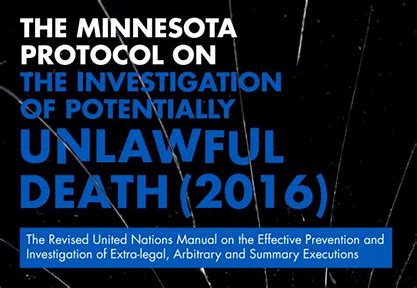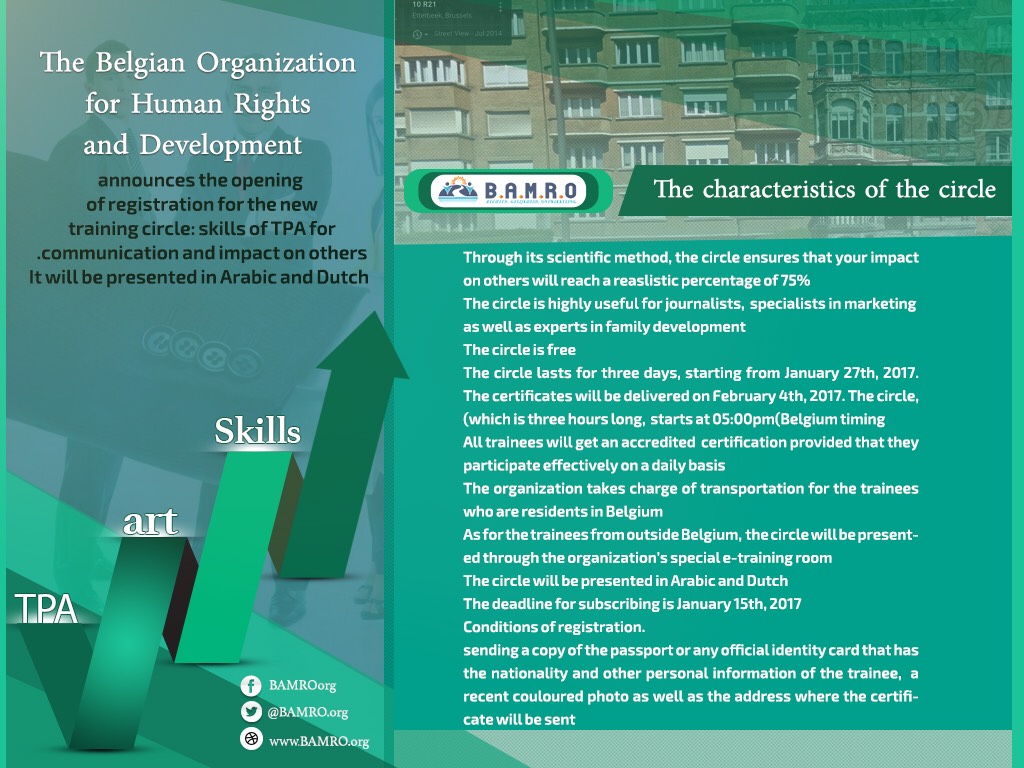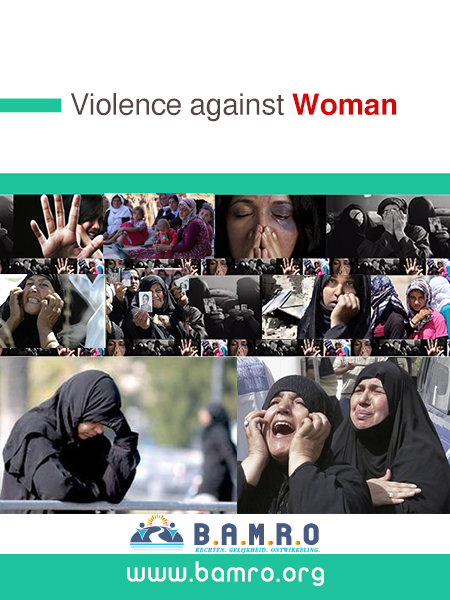Vote
-
For further training via the Zoom program or at our office? ?
Register a
Violation
We you
Contact youS.O.S.
0032 02 7322568
Minnesota Protocol
Revision of the UN Manual on the Effective Prevention and Investigation of Extra-Legal, Arbitrary and Summary Executions
Background to the Minnesota Protocol
The obligations on states to respect and protect life and the procedural obligation to investigate suspicious deaths have firm bases in international law. In the UN context, those obligations are elaborated in two key documents: the UN Principles on the Effective Prevention and Investigation of Extra-legal, Arbitrary and Summary Executions (1989), and its companion document, the UN Manual on the Effective Prevention and Investigation of Extra-Legal, Arbitrary and Summary Executions (1991) which became known, through popular usage, as the Minnesota Protocol.
The 1991 Minnesota Protocol was a ground-breaking piece of work with significant impact. However, as the professional using the document made clear to the Special Rapporteur and to OHCHR, the time was ripe for revision, to take account of developments in both international law and forensic science. As a key UN text providing guidance on the practical implementation of the duty to protect life and the obligation to investigate potentially unlawful deaths, its updating could ensure its continuing relevance over the coming decades. In a number of resolutions, the UN Commission on Human Rights had indeed called for such a revision (also later referenced by its successor, the Human Rights Council).
The revision process
The process of consultation on revision of the Minnesota Protocol was formally launched in April 2015, based on a scoping exercise aimed at establishing the areas of reform required, with the appointment of an Advisory Panel and two Working Groups, the latter tasked with drafting the revised document. The Advisory Panel consists of 73 members representing a wide range of experience and expertise, from all continents. One of the Working Groups focused on legal investigations; the other on forensics.
Interested parties were invited to make an initial written contribution to an initial consultation process by 15 June 2015. A first meeting of the two Working Groups was held in Geneva on 30 June to 1 July 2015.
On 29 October 2015, the Special Rapporteur presented his 2015 annual thematic report to the General Assembly in New York (A/70/304) in which he set out the background to the revision of the Minnesota Protocol and discussed the process. During the interactive dialogue several states expressed their support for the revision. For example, on behalf of its members, the European Union noted that the “EU would like to commend the Special Rapporteur for an active engagement to update the 1991 UN Manual on the effective prevention and investigation of extra-legal, arbitrary and summary executions. As underlined by the Special Rapporteur today, the Manual indeed provides important guidelines on how the UN principles on these issues in practice can be implemented in accordance to international law”.
On the same day the Special Rapporteur convened a side-event on the revision of the Minnesota Protocol for the benefit of states and civil society in the UN headquarters. The Rapporteur and the chairs of the Working Groups provided an update on progress to date and engaged in a dialogue with participants.
The second meeting of the Working Groups was held in Geneva on 4–6 February 2016. A side-event to which all States and other interested parties are invited was held on 5 February in the Palais de Nations, which attracted representatives from more than 25 states and offered a further opportunity to states to engage in dialogue with the Special Rapporteur and the OHCHR.
The text that emerged from the February Working Group meeting was circulated for comment by the members of the Advisory Panel. It was subsequently revised on the basis of their suggestions and recommendations with a view to public consultation.
The draft of the revised Minnesota Protocol was then opened for public comments by States, academia, civil society, and other interested parties during a six-week consultation from 11 April to 23 May 2016.
On 20 June 2016, the Special Rapporteur presented his thematic report to the Human Rights Council, including an addendum (A/HRC/32/39/Add.4), which informed members of the Council that the comments received during the second public consultation had been incorporated into a revised draft, which the Working Groups and subsequently the Advisory Panel would be reviewing.
On 31 July 2016 the Special Rapporteur, on behalf of the experts, conveyed the text to the High Commissioner, for publication.
Listings
- 1
- 2
- 3
- 4
- 5









